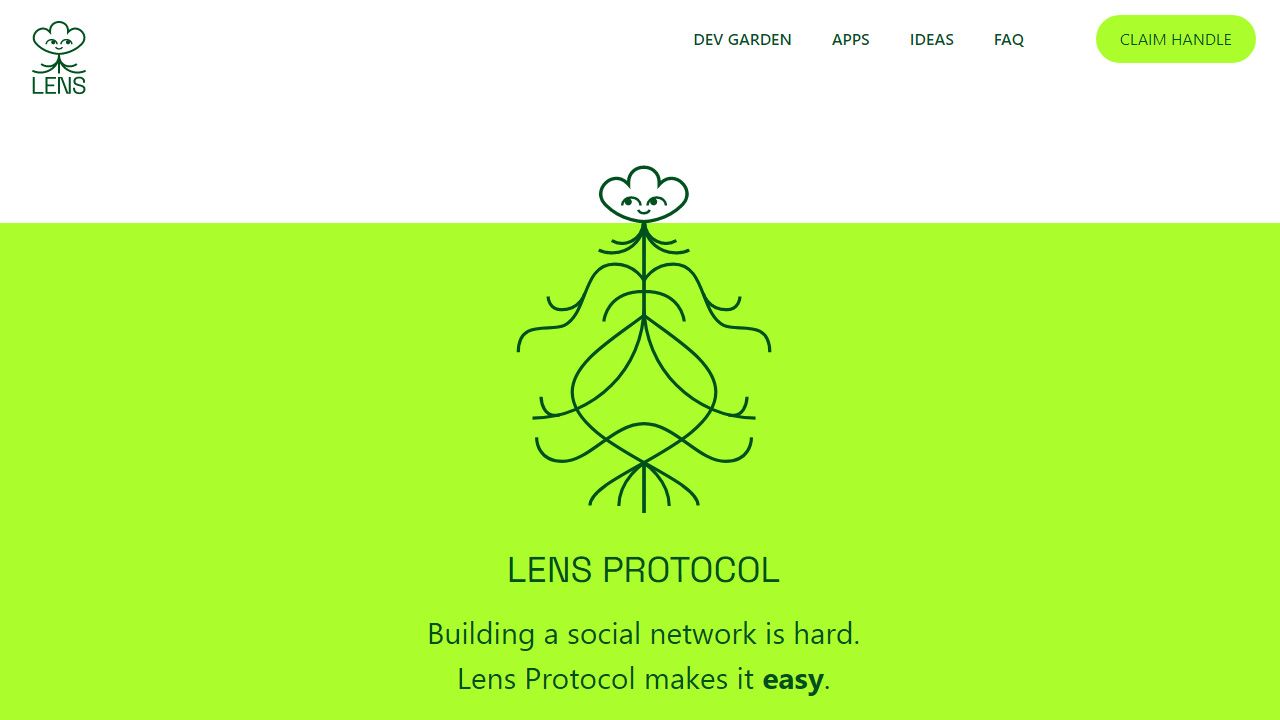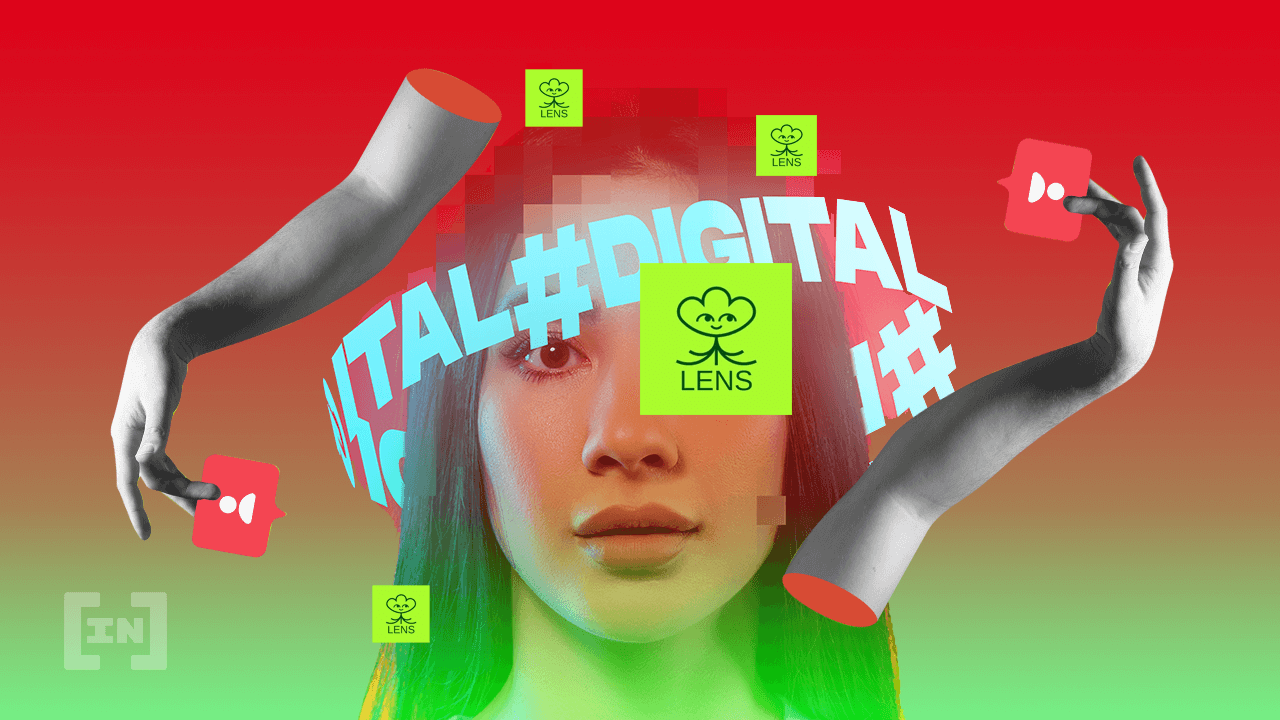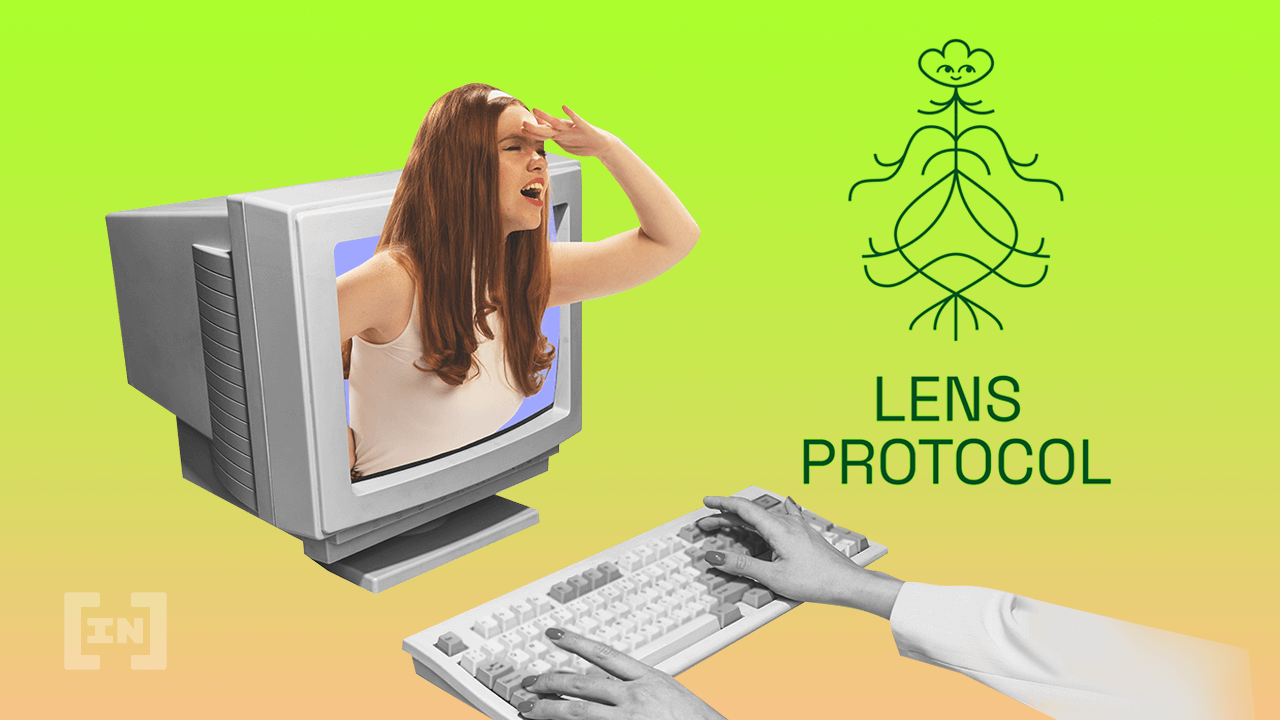Lens Protocol is a blockchain-based reimagining of social media for the age of Web3. However, unlike contemporary social media platforms, this offshoot of the Aave project embraces decentralization and wants all users to own their content and even monetize it.
What are Lens Protocol’s chances of starting a social media revolution for web3? Is blockchain technology bound to be involved in the future of social media? In this comprehensive article, we look at this, as well as what Lens Protocol is and how it works.
In this guide:
What is Lens Protocol?

Lens Protocol is a project that is looking to reinvent the concepts and possibilities of social media in the sphere of web3.
In web2, social media companies create their social graphs in a centralized manner. A social graph includes nodes that represent individuals, organizations, and the relationship between them. Typical social media platforms that utilize social graphs have all the information recorded in a centralized manner. In other words, the users do not actually own the information used on the platform. The use of blockchain technology can help give regular users back some control in web3.
Lens Protocol presents itself as a decentralized and composable social graph that functions on blockchain. The program looks to provide easy ways for interested parties to create their web3 social media platforms. User ownership sits at the heart of the social graph, and the customizability of the features is an essential part of the project.
The project has received a good deal of attention since its announcement in early 2022. Much of this is due to the team working on it. The project is an off-shoot of Aave, one of the essential lending platforms on Ethereum, and the brainchild of company founder Stani Kulechov.
How does Lens Protocol work?
At the heart of the project is the use of a decentralized social graph. Creating this is generally achieved through the use of a graph database (GDB). A GDB uses graph structures that include nodes, edges, and various properties, for storing data. In other words, these graphs show the participants in a network and the relationship between them.
To understand how Lens Protocol actually works, it is best to know how it is different from its current competitors. There are several ways of structuring a social graph. Most high-profile social media platforms, such as Facebook or LinkedIn, use a centralized service.
Data silos are used in the creation of social graphs as well. In this scenario, other applications that may want to integrate with the platform do not have access to data. This means that the structure of the platform is not customizable. It also means that the platform can be subject to a single point of failure, where it can be rendered unusable if the server becomes unavailable.
Lens Protocol uses an open-source and composable social graph. This can be used freely by creators looking to establish their own social media platform on web3. User profiles are represented through NFTs. The Polygon PoS layer 2 solution stores all the profiles. Furthermore, the platform is compatible with wallets such as MetaMask, Gnosis Safe, and Argent. This encourages interoperability across platforms.
What makes Lens Protocol unique?

Lens Protocol promises to offer the tools to create a decentralized social media world and a level playing field for those interested in creating their own. Any content posted by the user, whether it’s an avatar change or a body of text, is available on chain.
The use of modularity means that innovative users can create new features. It is then up to the community to decide whether to endorse them. In other words, these tools can make the information and the type of information being distributed free and agreed upon by the members of the community.
Lastly, Lens Protocol hints toward a new era of connectivity in the much-anticipated web3. The composable, decentralized social graph is available to all creators. With it, new social media platforms can emerge. This is a guarantee for the survival of free speech. And it is a way to ensure that the information you share on your social media profiles remains yours.
Benefits of Lens Protocol

Lens Protocol’s tools exist to serve the web3 community. The protocol is, technically, usable by anyone looking to create a new social media platform. Furthermore, these features should be easily customizable. The community is the one to decide which of these features are most often integrated.
The benefits of the Lens Protocol include the ownership of data, better connectivity, access to more information, a permissionless network whose service cannot be interrupted, and the lack of a central actor controlling the information.
How to use Lens Protocol
Lens Protocol’s design makes it easy for creators to start their social media profiles or for web3 supporters to connect with other users. There are a few key concepts that the protocol employs to achieve these purposes.
SponsoredThe creation of a profile NFT is the start of a user’s journey on Lens Protocol, and each profile is represented by one. Having a profile allows the user to add content or connect with others. When such a connection is established, an NFT-721 asset will be created and will show as the equivalent of an NFT-follow.
The central concept revolves around the idea of profile NFTs. Each user can create one, and this will enable them to maintain complete ownership over their content. These profiles integrate all the posts, comments, reposts (known here as mirrors). In the Lens Protocol ecosystem, these are all referred to as Publications. It is worth mentioning that individual addresses own these profile NFTs, and that an address can own multiple NFTs of this kind.
The module is another important concept of Lens Protocol. The modules allow users to introduce custom functionalities to the system. Each of these modules represents a whitelisted smart contract with code that runs under specific conditions. The system includes three types of modules.
- Follow modules represent the action of a user following another profile. Users set up their follow modules when creating their unique profiles. They follow a subscription model and are highly customizable.
- Collect modules is the one used for creating online articles.
- Reference modules exist for interacting with other users and commenting on their posts.
Other aspects of Lens Protocol

Lens Protocol’s design, essentially, replicates social media functions within the context of blockchain technology. The enforcement of each of these concepts occurs through the use of smart contracts.
Publications contain all the content produced by creators, curators, and regular users. These include posts, comments, and mirrors.
Sponsored SponsoredComments allow users to add additional content to another profile’s post. All of one’s comments get stored on a chain in that user’s Profile NFT.
Mirrors are similar to reposts and allow for content to be distributed further through the network. The mirrored content is subject to the conditions dictated by the original profile that originally posted it.
Collect is a method for creators to monetize their content. Through this, other users can mint NFTs of the content published by the original profile under the conditions stipulated by the original publisher.
Follow allows users to track other profiles. The minting Follow NFTs results upon the establishment of such a connection. Each profile may determine the conditions for this kind of connection. For example, a profile may determine that a fee of X amount of MATIC must be paid in such a scenario. Follow NFTs also have a Built-In Governance function.
Does Lens Protocol have a token?
Presently, Lens Protocol does not feature a native token. However, the likelihood that such a token will be introduced in the future is high. Users that take advantage of the protocol’s innovations right now are right to anticipate this, hopefully.
Can Lens Protocol revolutionize social media?
Social media use is ubiquitous, but the content that regular users create for these websites is not theirs to own. Furthermore, these websites have the power to censor information that does not adhere to their policies.
Web3 offers an improvement, and projects like Lens Protocol are spearheading this transformation. Users can harness the potential of blockchain technology to improve the social media experience, and even customize their social media platform. Whether it’s Lens Protocol or some other project, the benefits of web3 for social media are apparent and could have a significant impact.

